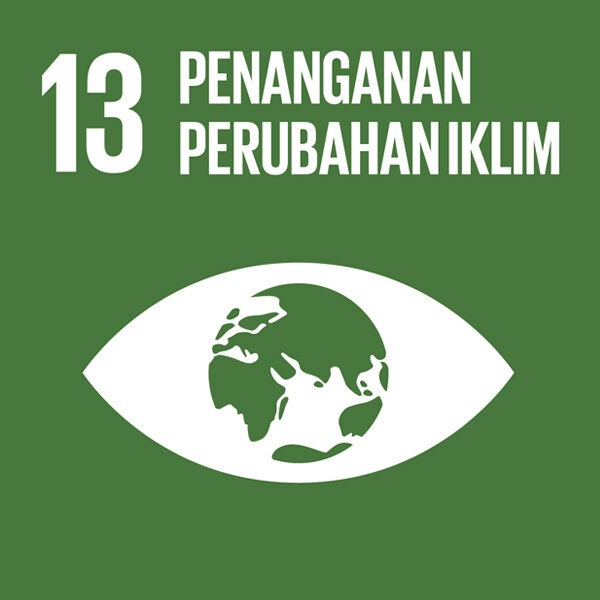 Landslides are one of the natural disasters with significant impacts on human lives, infrastructure, and the environment. To mitigate the risks and damages caused by these disasters, it is crucial to map areas prone to landslides, a process known as landslide susceptibility mapping. However, the methods used in this mapping often vary, and there has been no standard dataset that allows for the comparison of the effectiveness of these methods. Through international collaboration involving 23 institutions from 12 countries, this research has successfully developed the first benchmark dataset for studies in this field.
Landslides are one of the natural disasters with significant impacts on human lives, infrastructure, and the environment. To mitigate the risks and damages caused by these disasters, it is crucial to map areas prone to landslides, a process known as landslide susceptibility mapping. However, the methods used in this mapping often vary, and there has been no standard dataset that allows for the comparison of the effectiveness of these methods. Through international collaboration involving 23 institutions from 12 countries, this research has successfully developed the first benchmark dataset for studies in this field.
This research demonstrates how international collaboration can lead to significant impacts. By involving institutions from countries such as Italy, Indonesia, Norway, and the United States, the study brought together experts from various disciplines to contribute unique perspectives. Universitas Gadjah Mada, one of the participating institutions, highlighted Indonesia’s critical role in global research. The diverse backgrounds of the researchers ensured an inclusive and comprehensive approach, essential for cross-border issues like disaster mitigation.
The primary outcome of this research is a reference dataset comprising 7,360 slope units in Central Italy. This dataset was designed to map landslide susceptibility using topographic, geomorphological, and environmental data. Additionally, the study provides a workflow to ensure that the results can be fairly compared and reproduced by the global scientific community. This approach sets a new standard in landslide research, akin to the role of benchmark datasets in machine learning applications such as image recognition or linguistic analysis.
Eleven research groups utilized this dataset employing various methods, ranging from statistical approaches such as generalized additive models (GAMs) to machine learning techniques like random forest and neural networks. While the area under the curve (AUC) values of these models were relatively similar due to the standardized data validation process, the Brier score revealed significant differences in predictive performance across methods. These findings provide valuable insights into the strengths and limitations of each approach.
This research does not aim to identify the “best” method but emphasizes the importance of global standards for datasets and workflows. Such standards enable future researchers to easily compare their results with previous studies, accelerating progress in landslide risk mapping. This approach is especially relevant in other regions of the world, particularly in disaster-prone countries like Indonesia, where landslide risk mitigation is critical for protecting communities and infrastructure.
The relevance of this research to the Sustainable Development Goals (SDGs) is substantial. It supports SDG 13 (Climate Action) by providing tools to mitigate disaster risks associated with climate change. Furthermore, it contributes to SDG 11 (Sustainable Cities and Communities) by promoting preparedness among cities and communities for landslide disasters. The international collaboration involved in this research reflects the spirit of SDG 17 (Partnerships for the Goals), emphasizing the importance of global cooperation in achieving sustainable development objectives.
The success of this research is a tangible example of how international collaboration can address global challenges. By bringing together researchers from various countries and institutions, this study provides a model for how similar collaborations can be applied to other issues, such as climate change mitigation or mapping risks for other disasters. This approach makes science more inclusive, relevant, and impactful for global society.
Keywords: Natural Disasters, Research, Collaboration
Reference:
Massimiliano Alvioli, Marco Loche, Liesbet Jacobs, Carlos H. Grohmann, Minu Treesa Abraham, Kunal Gupta, Neelima Satyam, Gianvito Scaringi, Txomin Bornaetxea, Mauro Rossi, Ivan Marchesini, Luigi Lombardo, Mateo Moreno, Stefan Steger, Corrado A.S. Camera, Greta Bajni, Guruh Samodra, Erwin Eko Wahyudi, Nanang Susyanto, Marko Sinčić, Sanja Bernat Gazibara, Flavius Sirbu, Jewgenij Torizin, Nick Schüssler, Benjamin B. Mirus, Jacob B. Woodard, Héctor Aguilera, Jhonatan Rivera-Rivera. “A benchmark dataset and workflow for landslide susceptibility zonation.” Earth-Science Reviews, 258 (2024): 104927.


 Author: Nanang Susyanto
Author: Nanang Susyanto
